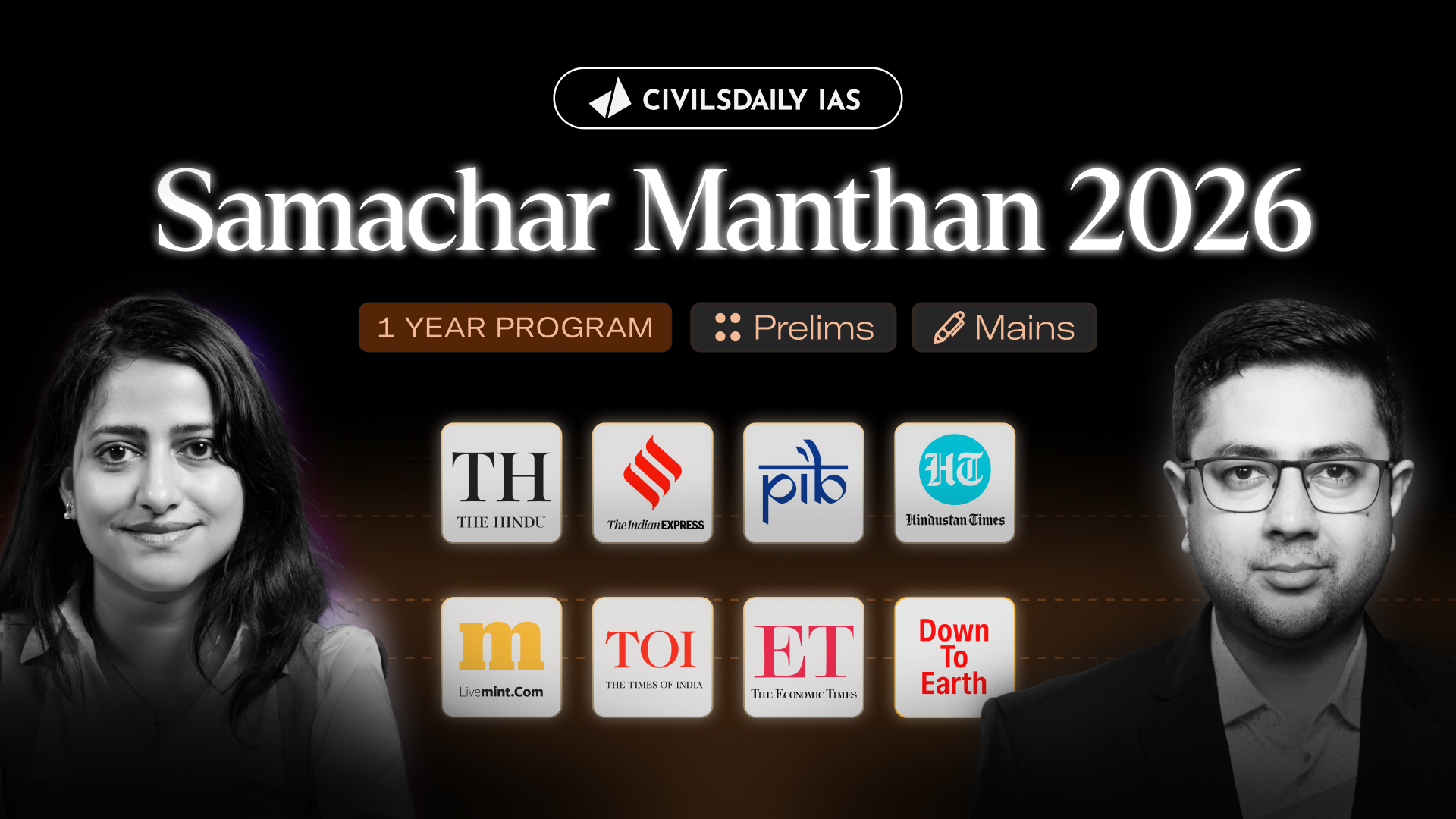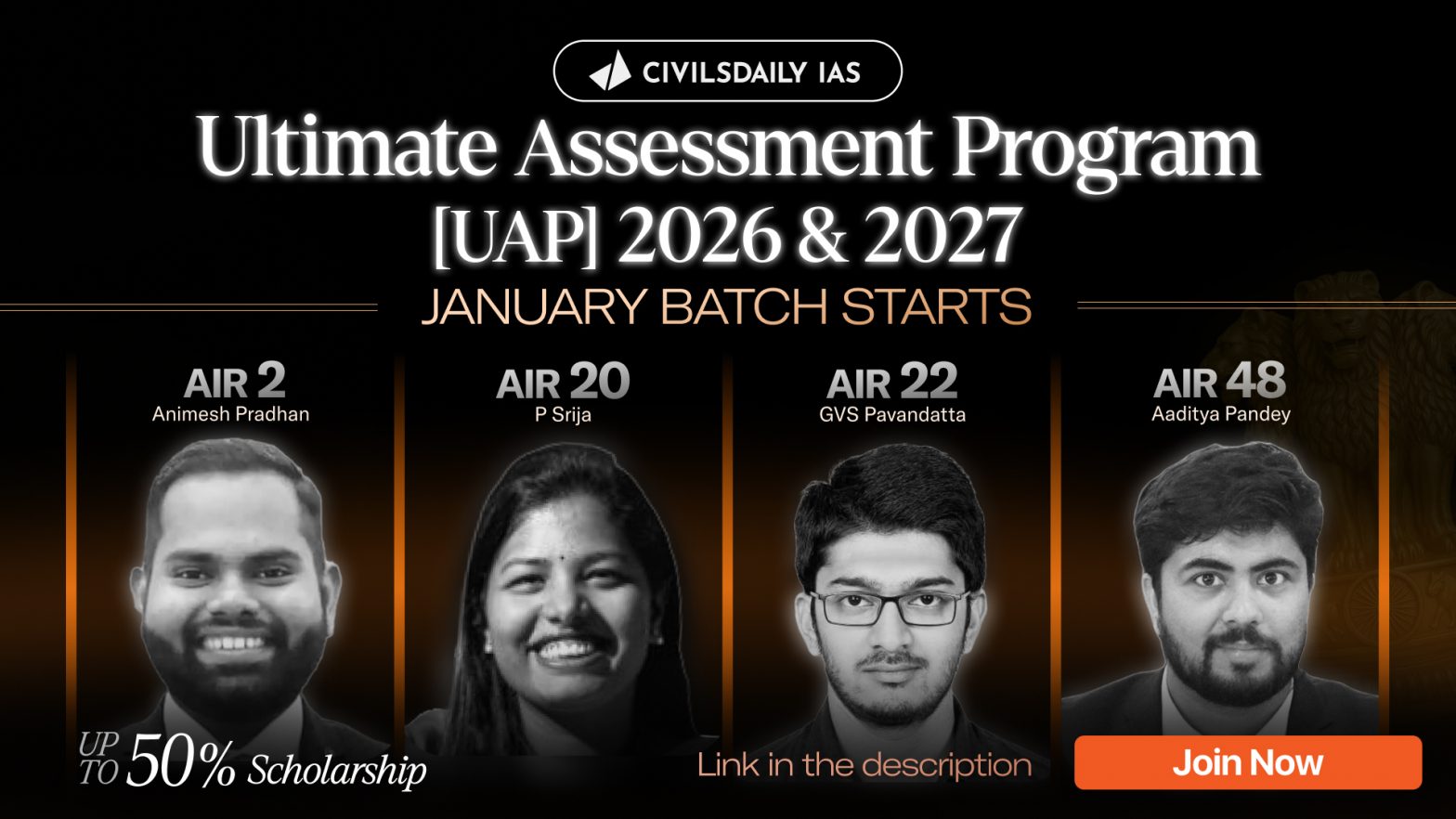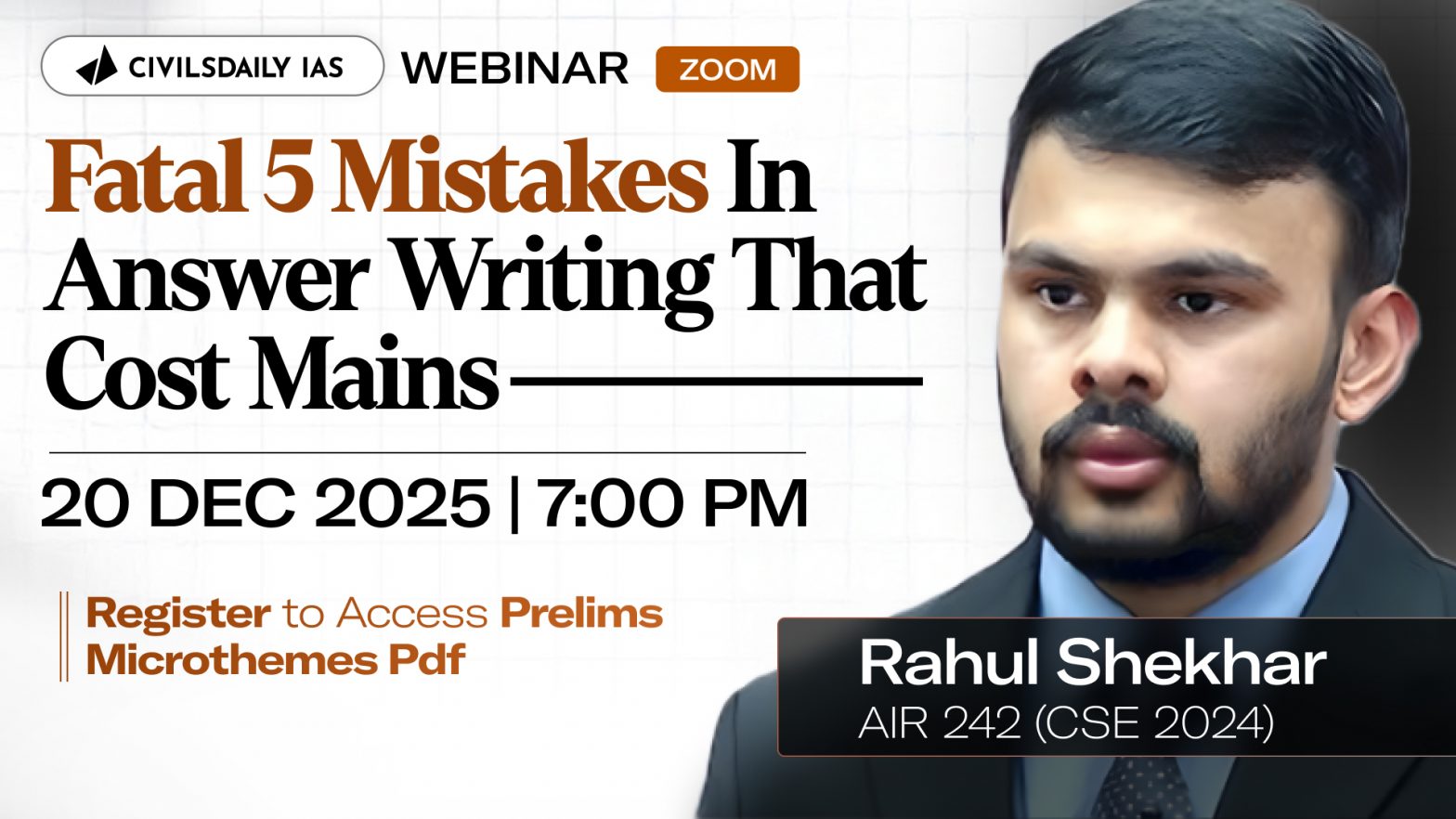





Burning IssuesInterview ProgramMotivation BytesPrelims DailyPrevious Year Question PaperProgram LaunchRanker WebinarsThe Hindu Op-edToppers TestimonialsUPSC Mains Topic-Wise PYQsUPSC PreparationUPSC SyllabusX Factor Notes
27th September
International organizations related to environment conservation
Earth System Governance Project (ESGP) Established When and by Whom: Developed under the auspices of the International Human Dimensions Programme on Global Environmental Change. It started in January 2009. Headquarter: The Earth System Governance Project Office is hosted at Lund University, Sweden. Key Functions: The Earth System Governance Project aims to contribute to science on… Continue reading International organizations related to environment conservation
Laws related to environment conservation in India
Air (Prevention and Control of Pollution) Act of 1981 The Air (Prevention and Control of Pollution) Act, 1981 an Act of the Parliament of India to control and prevent air pollution in India It was amended in 1987 The Government passed this Act in 1981 to clean up our air by controlling pollution. It states… Continue reading Laws related to environment conservation in India
NGOs, Institutions and Summits related to environment conservation in India
Agency for Non-conventional Energy and Rural Technology (ANERT) Established When and by Whom: It is an autonomous organisation established during 1986 under Societies Act by the Government of Kerala, now functioning under power dept. Headquarter: Thiruvananthapuram, Kerala Objective: To gather and disseminate useful knowledge in various fields of Non-Conventional Energy, Energy Conservation, and Rural Technology.… Continue reading NGOs, Institutions and Summits related to environment conservation in India
Government Schemes/projects related to environment conservation in India
Project Tiger Started in: It is a tiger conservation programme launched in 1973 by the Government of India during Prime Minister Indira Gandhi’s tenure. Objective: The Project Tiger aims to foster an exclusive tiger agenda in the core areas of tiger reserves, with an inclusive people-oriented agenda in the buffer. Key facts: It is a… Continue reading Government Schemes/projects related to environment conservation in India
Government Bodies related to environment conservation in India
Central Pollution Control Board Established: It was established in 1974 under the Water (Prevention and Control of Pollution) Act, 1974. Objective: To provide technical services to the Ministry of Environment and Forests under the provisions of the Environment (Protection) Act, 1986. Key Functions: Advise the Central Government on any matter concerning prevention and control of… Continue reading Government Bodies related to environment conservation in India
27 September 2017 | Prelims Daily with Previous Year Questions & Tikdams
Q.1) Which of the following apps is/are launched by the Telecom Regulatory Authority of India (TRAI)? 1. Mycall app 2. MySpeed app 3. Do not disturb (DND 2.0) Select the correct option using the codes given below. a) 1, 2 and 3 b) 1 and 3 only c) 2 and 3 only d) 1 only… Continue reading 27 September 2017 | Prelims Daily with Previous Year Questions & Tikdams
26th September
Ans Writing Session for Pub Adm Scholars.
Hello Folks, Here, I feel that we should start a thread of Answer writing session for Pub Adm scholars (2018)-till Civilsdaily starts an official one.Cross checking and mutual learning would be core theme. Is it sounds good ? Kindly thumbs up and post ur comment and suggestions accordingly. Thank you ?
upsc
i need current affairs daily with MCQ’s
26 September 2017 | Prelims Daily with Previous Year Questions & Tikdams
Q.1) Consider the following statements regarding the ‘Bay of Bengal Initiative for Multi-Sectoral Technical and Economic Cooperation (BIMSTEC)’: 1. First BIMSTEC summit was held in Thailand. 2. The ADB(Asian Development Partner) is BIMSTEC’s development partner. Which of the statements given above is/are correct? a) Neither 1 nor 2 b) 1 only c) 2 only d)… Continue reading 26 September 2017 | Prelims Daily with Previous Year Questions & Tikdams
Role of Civil Services in a Democracy
Historical review of civil services and its importance Role of civil services in governance and constitutional provisions related to it Civil Service Accountability and challenges, benefits of an independent, permanent and impartial civil service Reforms needed in civil services: 2nd ARC report and other committee recommendations
Reforms needed in civil services: 2nd ARC report and other committee recommendations
Broad Reforms required The development work needs some flexibility from a strict observance of rigid rules and regulations. Rigid rule bound bureaucracies should be changed into flexible and action-oriented. Reforms are required in the field of recruitment of civil servants so that right people could be recruited who can ensure smooth functioning of democracy. Training… Continue reading Reforms needed in civil services: 2nd ARC report and other committee recommendations
Civil Service Accountability and Challenges, benefits of an independent, permanent and impartial civil service
Accountability of a civil servant In any democracy, Ministers are responsible to the people through Parliament and therefore the civil servants have to be accountable to the Minister. However, an impartial civil service is responsible not only to the government of the day but to the Constitution of the land to which they have taken… Continue reading Civil Service Accountability and Challenges, benefits of an independent, permanent and impartial civil service
Role of civil services in governance, major responsibilities and constitutional provisions related to it
Civil services perform the following important functions Basis of government: No government can exist without administrative machinery. All nations, irrespective of their system of government, require some sort of administrative machinery for implementing policies. An instrument for implementing Laws and Policies: Civil services are responsible for implementing the laws and policies of government. By carrying… Continue reading Role of civil services in governance, major responsibilities and constitutional provisions related to it
Historical review of civil services and its importance
India is a democratic country and in this system, power confers with the people. The power is exercised through its designated representatives who have the command to manage them for particular period. The civil services by quality of its knowledge, experience and understanding of public affairs support the chosen representatives to device effectual policy and… Continue reading Historical review of civil services and its importance
25th September
Ethics Case Studies | Mains 2017
Note4Students Year on year, questions in ethics paper have become more dynamic in nature. This is not just for static syllabus portion but also for case studies. These 60+ case studies for Mains 2017 are based on current affairs and have been mapped to subtopics of Ethics syllabus in order to provide a better understanding of… Continue reading Ethics Case Studies | Mains 2017
[Ethics Case Studies] Work culture
Syllabus mapping Paper 4 | Ethics, Integrity and Aptitude | Work culture Note4Students This initiative is a part of Target Mains programme for Mains 2017. You can post your answers in the comment section. But mentor review of answers will not be available. Just like various other CD community initiatives, this will also be a… Continue reading [Ethics Case Studies] Work culture
[Ethics Case Studies] Strengthening of ethical and moral values in governance
Syllabus mapping Paper 4 | Ethics, Integrity and Aptitude | Strengthening of ethical and moral values in governance Note4Students This initiative is a part of Target Mains programme for Mains 2017. You can post your answers in the comment section. But mentor review of answers will not be available. Just like various other CD community… Continue reading [Ethics Case Studies] Strengthening of ethical and moral values in governance
[Ethics Case Studies] Social influence and persuasion
Syllabus mapping Paper 4 | Ethics, Integrity and Aptitude | Social influence and persuasion Note4Students This initiative is a part of Target Mains programme for Mains 2017. You can post your answers in the comment section. But mentor review of answers will not be available. Just like various other CD community initiatives, this will also… Continue reading [Ethics Case Studies] Social influence and persuasion
[Ethics Case Studies] Quality of service delivery
Syllabus mapping Paper 4 | Ethics, Integrity and Aptitude | Quality of service delivery Note4Students This initiative is a part of Target Mains programme for Mains 2017. You can post your answers in the comment section. But mentor review of answers will not be available. Just like various other CD community initiatives, this will also… Continue reading [Ethics Case Studies] Quality of service delivery
[Ethics Case Studies] Public/Civil service values and Ethics in Public administration: Status and problems
Syllabus mapping Paper 4 | Ethics, Integrity and Aptitude | Public/Civil service values and Ethics in Public administration: Status and problems Note4Students This initiative is a part of Target Mains programme for Mains 2017. You can post your answers in the comment section. But mentor review of answers will not be available. Just like various… Continue reading [Ethics Case Studies] Public/Civil service values and Ethics in Public administration: Status and problems
Slide Anything shortcode error: A valid ID has not been provided






